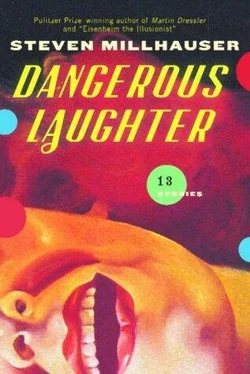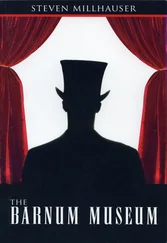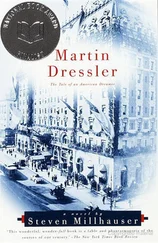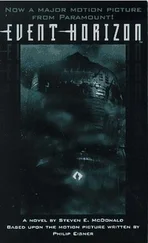The commotion was heard by a janitor sweeping the aisles of the upper theater. He came down to check and immediately ran outside for a policeman, who hurried over and appeared at the top of the stairs with a lantern and a nightstick to witness a scene of dangerous panic. People were sobbing and pushing forward, tearing at one another’s bodies, trampling the fallen woman. The policeman was unable to fight his way down. Shrill blows of his whistle brought three more policemen with lanterns, who helped the terrified crowd up the narrow stairway. When it was all over, seven people were hospitalized; the young woman on the floor later died of injuries to the face and head. The painting had been damaged in many places; one portion of canvas showed a ragged hole the size of a fist. On the floor lay broken fans and crushed top hats, torn ostrich plumes, a scattering of dark red rose petals, a mauve glove, an uncoiled chignon with one unraveled ribbon, a cracked monocle at the end of a black silk cord.
Regrettably, newspaper accounts concentrated more on the panic than on the painting. There were the usual attempts at tracing the motions of the figures to hidden magic lanterns, even though not a single visitor reported a beam of light in the darkened, gas-lit room. The penetration of the figures into the room was explained either as a theatrical stunt performed by concealed actors or a delusion stimulated by the heightened anxiety of a crowd in the dark. In truth, we simply cannot explain the reported effects by means of the scant evidence that has come down to us. It is worth noting that no one has ever duplicated the motions produced in the Phantoptic Theater. On strictly objective grounds, we cannot rule out the possibility that Crane’s figures in Terra Incognita really did what they appeared to do, that is, emerge from the paint and enter the room, perhaps as a result of some chemical discovery no longer recoverable.
By order of the mayor, Crane’s theater was closed. Three weeks later, when he attempted to open a second theater, city authorities intervened. Meanwhile the parents of the trampled woman sued Crane for inciting a riot. Although he was exonerated, the judge issued a stern warning. Crane never returned to public life.
In his cramped studio and in neighborhood chophouses we catch glimpses of him over the next few years: a thin-lipped, quiet man, with a clean-shaven face and brooding eyes. He is never without his big-bowled meerschaum with its cherrywood stem and its chewed rubber bit. W. C. Curtis speaks of his melancholy, his long silences. Was he bitter over the closing of his theater, over his brief notoriety that failed to develop into lasting fame? Only once does he complain to Curtis: he regrets, he says, that his “invention” has never been recognized. When he is mentioned in the papers now and then, it is not as an artist or an inventor but as the former proprietor of the Phantoptic Theater.
He is often tired. Curtis notes that Crane is always alone in the evenings when he visits; we hear no further mention of Annie Merrow, who vanishes from the record. For a time Crane returns to his old invention, the Phantasmatrope, attempting to solve the problem of the shutter but abruptly losing interest. He no longer takes photographs. He spends less and less time in his studio and instead passes long hours in coffee shops and cheap restaurants, reading newspapers slowly and smoking his pipe. He refuses to attend art exhibitions. He likes to stroll past the East River piers and ferry slips, to linger before the windows of the sailmakers’ shops on South Street. Now and then, in order to pay the rent, he takes a job that he quits after a few weeks: a toy salesman in a department store, a sandwich-board man advertising a new lunchroom. One day he sells his camera for a dollar. He takes long walks into distant neighborhoods, sits on benches at the water’s edge, a lean man beside wavering lines of smoke. He appears to subsist on apples and roasted chestnuts bought in the street, on cheap meals in alehouses and oyster bars. He likes to watch the traffic on the East River: three-masted barks, old paddle-wheel towboats and the new screw-propelled tugs, steamboats with funnels and masts.
Suddenly — the word belongs to W. C. Curtis — Crane returns to his studio and shuts himself up day after day. He refuses to speak of his work. At alehouses and night cafés he picks at his food, looks restlessly about, knocks out his pipe on the table, and packs in fresh tobacco with slow taps of his fingertip. Curtis can scarcely see him behind clouds of smoke. “It’s like the old days,” Curtis notes in his diary, adding ruefully, “without the joy.”
One evening, while Crane is raising to his mouth a glass of dark ale, he pauses in midair, as if a thought has crossed his mind, and mentions to Curtis that a few hours ago he rented a room in an old office building on Chambers Street, a few blocks from City Hall Park. Curtis starts to ask a question but thinks better of it. The next day a flurry of hand-lettered signs on yellow paper appears on hoardings and lampposts, announcing a new exhibition on November 1, 1888.
In the small room with its two dust-streaked windows and its rolltop desk, a single painting was on display. Only W. C. Curtis and four of Curtis’s friends attended. Crane stood leaning against the opposite wall, between the two windows, smoking away at his pipe. Curtis describes the painting as roughly four feet by five feet, in a plain, varnished frame. A small piece of white paper, affixed to the wall beside it, bore the words SWAN SONG.
The painting depicted Crane’s studio, captured with Verisimilist fidelity. Crane himself stood before an easel, with his long legs and a buttoned-up threadbare jacket, gripping his palette and a clutch of brushes in one hand and reaching out with a long fine-tipped brush in the other as he held his head back and stared at the canvas “with a look of ferocity.” The walls of the studio were thickly covered with framed and unframed paintings and pencil-and-chalk sketches by Crane, many of which Curtis recognized from Crane’s Verisimilist and Transgressive periods. There were also a number of paintings Curtis had never seen before, which he either passes over in silence or describes with disappointing briskness (“another pipe-and-mug still life,” “a rural scene”). On the floor stood piles of unframed canvases, stacked six deep against the walls. One such painting, near a corner, showed an arm protruding from the surface and grasping the leg of a chair. The painting on the easel, half finished, appeared to be a preliminary study for Picnic on the Hudson; a number of seated figures had been roughly sketched but not painted in, and in another place a woman’s right arm, which had been finished at a different angle, showed through the paint as a ghostly arm without a hand. The studio also included a zinc washstand, the corner of a cast-iron heating stove, and part of a thick table, on which stood one of Crane’s magic lanterns and a scattering of yellowed and curling photographs showing a young woman in a chemise, with one strap slipping from a shoulder and her head turned at many different angles.
From everything we know of it, Swan Song would have been at home in the old Verisimilist Exhibition of 1874. Curtis notes the barely visible tail of a mouse between two stacked canvases, as well as a scattering of pipe ashes on a windowsill. As he and his friends stood before the painting, wondering what was new and different about it, they heard behind them the word “Gentlemen.” In truth they had almost forgotten Crane. Now they turned to see him standing against the wall between the two windows, with his pipe in his hand. Smoke floated about him. Curtis was struck by his friend’s bony, melancholy face. Weak light came through the dusty windows on both sides of Crane, who seemed to be standing in the dimmest part of the room. “Thank you,” he said quietly, “for—” And here he raised his arm in a graceful gesture that seemed to include the painting, the visitors, and the occasion itself. Without completing his sentence, he thrust his pipe back in his mouth and narrowed his eyes behind drifts of bluish smoke.
Читать дальше












